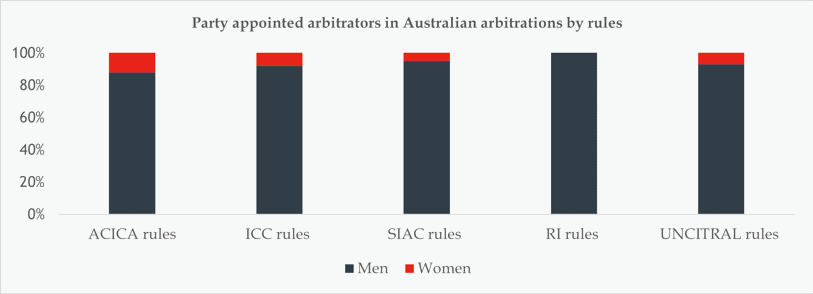Gender diversity in APAC: A long way from parity
- Diversity in law
- International arbitration


Late last year the Australian Financial Review revealed that the total number of female partners at Australia's top law firms had passed 30% for the first time ever, following a promotion cycle in which 46% of all new partners were women. The situation is similar in Hong Kong and Singapore, where out of the 20 largest firms, five are now spearheaded by a woman with most firms committing to achieving aspirational gender diversity targets within their partnerships, management committees and leadership roles.
While gender diversity at Asia-Pacific (APAC) law firms is improving, there remain stark disparities within the judge and arbitrator communities in the region—particularly in Australia, where disparities among judges have hit headlines in recent years.
There is an inherent benefit in having courts and tribunals that fairly represent the communities they serve.
More generally, studies show that gender diversity leads to maximum market penetration of the talent pool, better decision-making and diversity of thought as well as reducing unconscious bias with organizations. McKinsey & Company have shown that in a “full potential” scenario—in which women participate in the economy equally to men—$28 trillion dollars would be added to annual global GDP, demonstrating that gender inequity is not only fundamentally unfair but on a macro-level it also results in an under-performing economy.
In 2018 there were 200,000 more women than men in Australia, yet women still only account for 26% of all Federal Court judges. The gap between the composition of the judiciary and that of the general population in Australia has been dubbed the “diversity deficit”, and unlike some liberal democracies such as Canada, South Africa and the UK, Australia makes no constitutional or legislative provision for judicial diversity.
In Singapore, the percentage of women in the judiciary is around 28% and in the Hong Kong Court of Final Appeal, the highest court in Hong Kong, less than 10% of the judges are women. The two female judges, out of a total of 21, were also only appointed in 2018: Two decades after the Court was established.
A recent report by FTI Consulting and the Australian Centre for International Commercial Arbitration (ACICA) indicates that the appointment of female arbitrators in Australia-related arbitrations may be about five years behind global trends reflected in the 2020 ICCA Report of the Cross-Institutional Task Force on Gender Diversity in Arbitral Appointments and Proceedings. Out of the 223 arbitrations surveyed by ACICA (with some connection with Australia and concluded, conducted or commenced between 2016 and 2019) where parties indicated the gender of the arbitrator, 8% of arbitrators in international arbitrations were female and 7% for domestic arbitrations were female.

The number of arbitrators appointed in key Asian jurisdictions, namely Singapore and Hong Kong, is similarly low. For instance, only 18% of arbitrators appointed in 2019 in Hong Kong International Arbitration Centre (HKIAC) arbitrations were women. (No equivalent data exists for Singapore.)
There are many reasons why the numbers of women judges and arbitrators remain so disparate in the APAC region. The 2019 International Women in Law Report noted a common stereotype of female lawyers as lawyers who are “good academically”, but not as skilled at court advocacy. Female participants in a recent Singapore survey suggested that clients often demonstrate a reluctance to accept advice from a female lawyer, but willingly accept the same advice from a male colleague.
The inclusion of women judges and arbitrators enhances legitimacy, particularly in public interest disputes. It also improves judicial decision-making by avoiding the narrowness of experience and knowledge implicit in a collection of homogenous judges. Selecting arbitrators from the usual pool of mostly male candidates also leads to procedural inefficiencies including a lack of available arbitrators, delays in the rendering of arbitral awards and an increased potential for conflicts of interests—all of which arbitral parties aim to avoid.
In 2018 Burford launched The Equity Project with an initial $50 million earmarked to finance women-led litigation or arbitration. As of today, we have deployed nearly $57 million to fund cases that are run by women partners and counsel—one of which is an Asia-seated arbitration. The Equity Project aims to enhance the visibility of women leading the advocacy for high-profile disputes which in turn should help to ensure an improved pipeline of women candidates for arbitrator and judicial roles.
Burford is committed to promoting gender diversity and is a proud signatory to the Equal Representation in Arbitration Pledge and contributed to the 2020 ICCA Report.